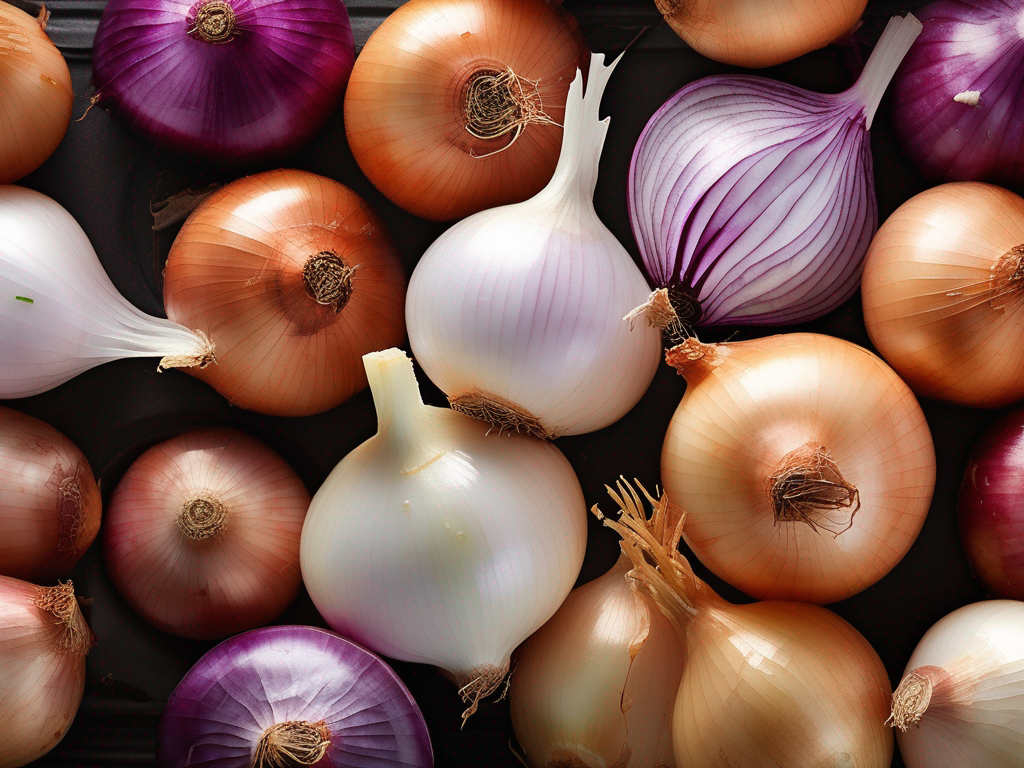
How to Tell if Onions Fresh Whole Have Gone Bad
Get Your Free Food Safety Cheat Sheet
30 most common foods with instant answers. Print it and stick it on your fridge—completely free!
How to Tell if Onions Fresh Whole Have Gone Bad
Onions are a versatile and essential ingredient in many dishes, adding flavor and depth to our meals. However, like all fresh produce, onions have a shelf life and can go bad if not stored properly. In this blog post, we will discuss how to tell if onions fresh whole have gone bad and provide practical tips for ensuring food safety. (Onions fresh whole)
Signs of Spoiled Onions Fresh Whole
When onions fresh whole start to spoil, there are several indicators to look out for. By recognizing these signs early, you can prevent foodborne illnesses and waste. Here are some common signs that your onions may have gone bad:
1. Mold or Mildew
- If you notice any mold or mildew on the surface of the onion, it is a clear sign that it has spoiled.
- Mold can appear as fuzzy patches in various colors, including white, green, or black.
2. Soft or Squishy Texture
- Fresh onions should feel firm and solid to the touch. If the onion feels soft or squishy, it may be rotting from the inside.
- Press gently on the onion to check for any soft spots or areas of decay.
3. Unpleasant Odor
- Spoiled onions emit a foul odor that is distinct from their usual pungent smell.
- If the onion smells rotten, musty, or sour, it is best to discard it immediately.
4. Sprouting or Green Shoots
- If you notice green shoots emerging from the top of the onion, it is a sign that it is past its prime.
- Sprouting onions are safe to eat but may have a bitter taste and a softer texture.
5. Discoloration or Dark Spots
- Discoloration, dark spots, or browning on the onion's skin indicate decay and spoilage.
- Cut open the onion to check for any unusual discoloration or slimy texture inside.
Proper Storage to Extend Onion Freshness
To prevent onions fresh whole from spoiling prematurely, proper storage is essential. Follow these tips to extend the shelf life of your onions and maintain their freshness:
1. Store in a Cool, Dry Place
- Onions should be stored in a cool, dry, and well-ventilated area away from direct sunlight.
- Avoid storing onions near sources of heat or moisture, such as the stove or sink.
2. Keep Onions Whole Until Use
- To prolong their freshness, keep onions whole and unpeeled until you are ready to use them.
- Once an onion is cut, it is more susceptible to spoilage and should be used promptly or stored in the refrigerator.
3. Proper Air Circulation
- Allow for proper air circulation around the onions to prevent moisture buildup, which can lead to mold growth.
- Store onions in a breathable container, such as a mesh bag or a ventilated storage bin.
4. Separate from Potatoes
- Do not store onions fresh whole near potatoes or other fruits and vegetables that emit ethylene gas.
- Ethylene gas can accelerate the ripening and spoilage of onions, so keep them separate in storage.
5. Check Regularly for Spoilage
- Inspect your onions regularly for any signs of spoilage, such as mold, soft spots, or sprouting.
- Remove any spoiled onions immediately to prevent contamination of the remaining produce.
Conclusion
In conclusion, onions fresh whole are a pantry staple that adds flavor and nutrition to our meals. By knowing how to identify the signs of spoilage and following proper storage practices, you can enjoy fresh and safe onions for longer. Remember to store onions in a cool, dry place, keep them whole until use, and check for any signs of mold, softness, or sprouting. By taking these precautions, you can minimize food waste and protect your health.
For more information on food safety and storage, visit our [onions fresh whole](/food/onions fresh whole) page. Thank you for reading, and stay safe in the kitchen! (Onions fresh whole)
Authoritative Food Safety References
These agencies and university labs inform every tip and health precaution we publish.
USDA FoodKeeper – Cold Storage Guidelines
Official refrigerator, freezer, and pantry timelines maintained by the U.S. Department of Agriculture.
Visit USDA FoodKeeperFDA Produce Safety Rule & Grower Guidance
Field-to-fridge handling practices that prevent contamination of fruits, vegetables, and leafy greens.
Visit FDA Produce SafetyCDC Foodborne Illness Prevention Hub
Surveillance-backed guidance on pathogens, symptoms, and steps to reduce foodborne illness risk.
Visit CDC Food SafetyUC Davis Postharvest Technology Center
University research detailing optimal storage atmospheres for produce after harvest.
Visit UC Davis PostharvestPenn State Extension – Home Food Preservation & Safety
Peer-reviewed extension bulletins on safe canning, chilling, and reheating practices.
Visit Penn State ExtensionGet Your Free Food Safety Cheat Sheet
30 most common foods with instant answers. Print it and stick it on your fridge—completely free! Want more? Upgrade to the complete guide with 70+ foods.
Scan your food directly and get instant safety info using our AI-powered camera feature.